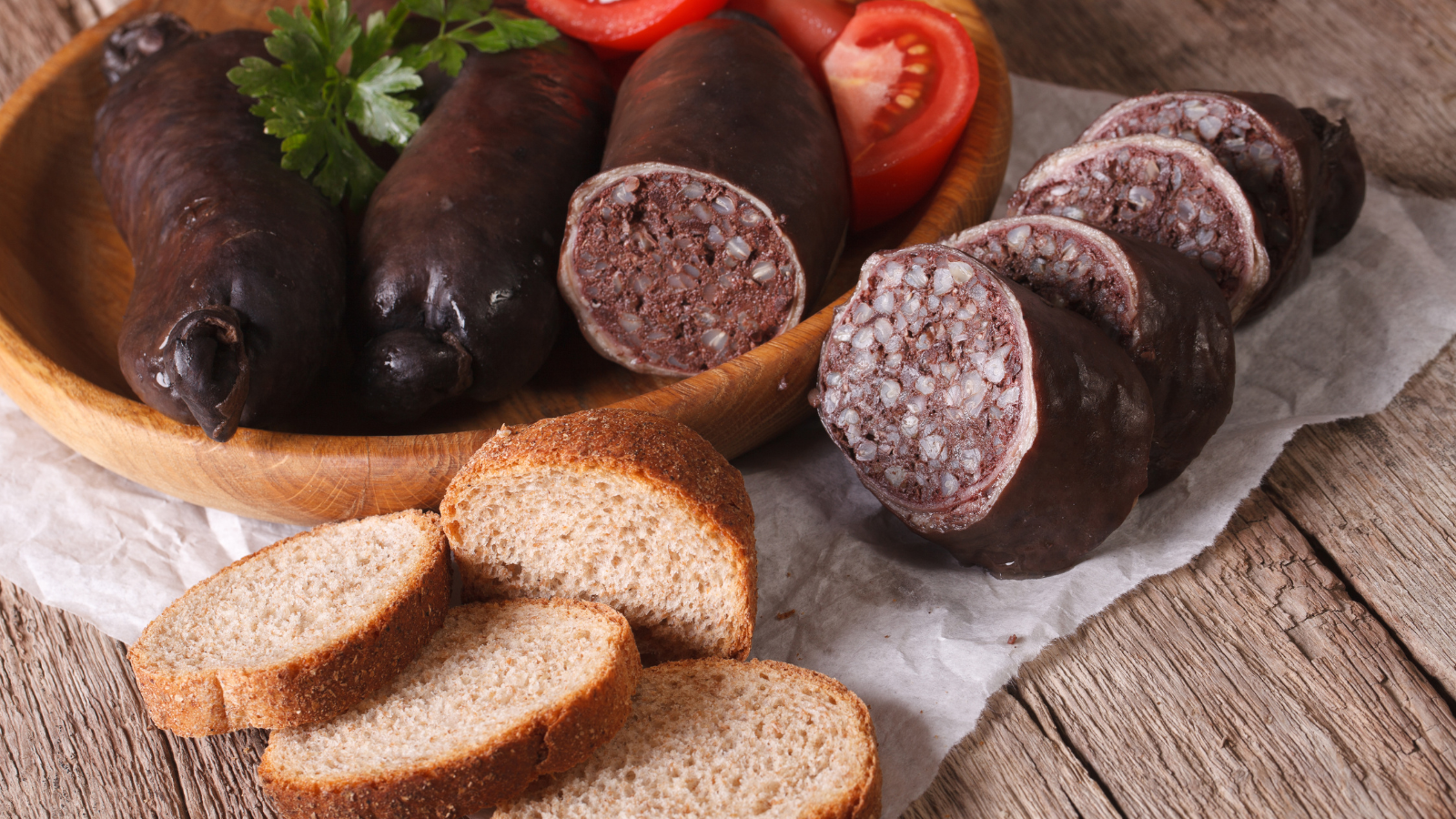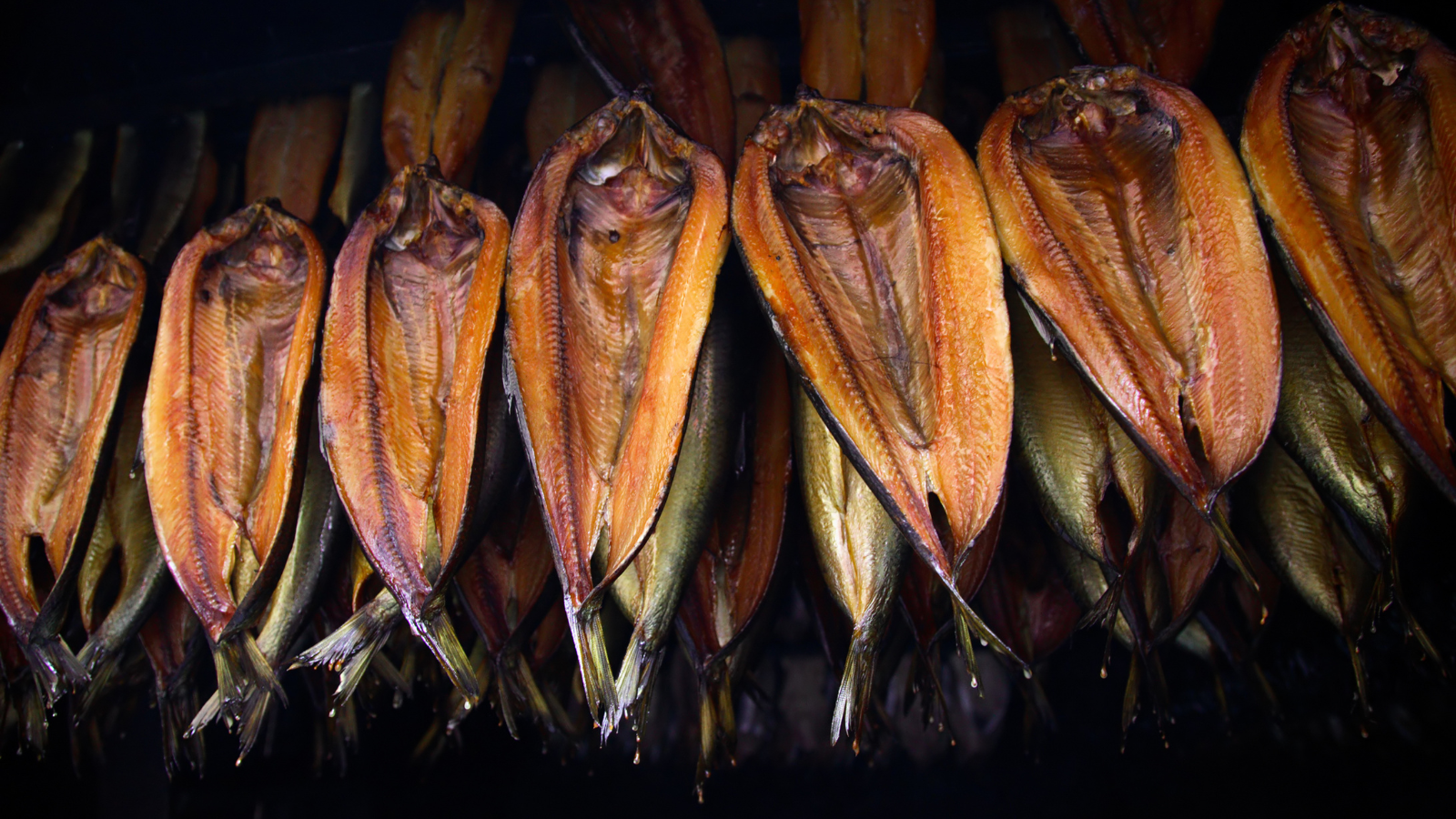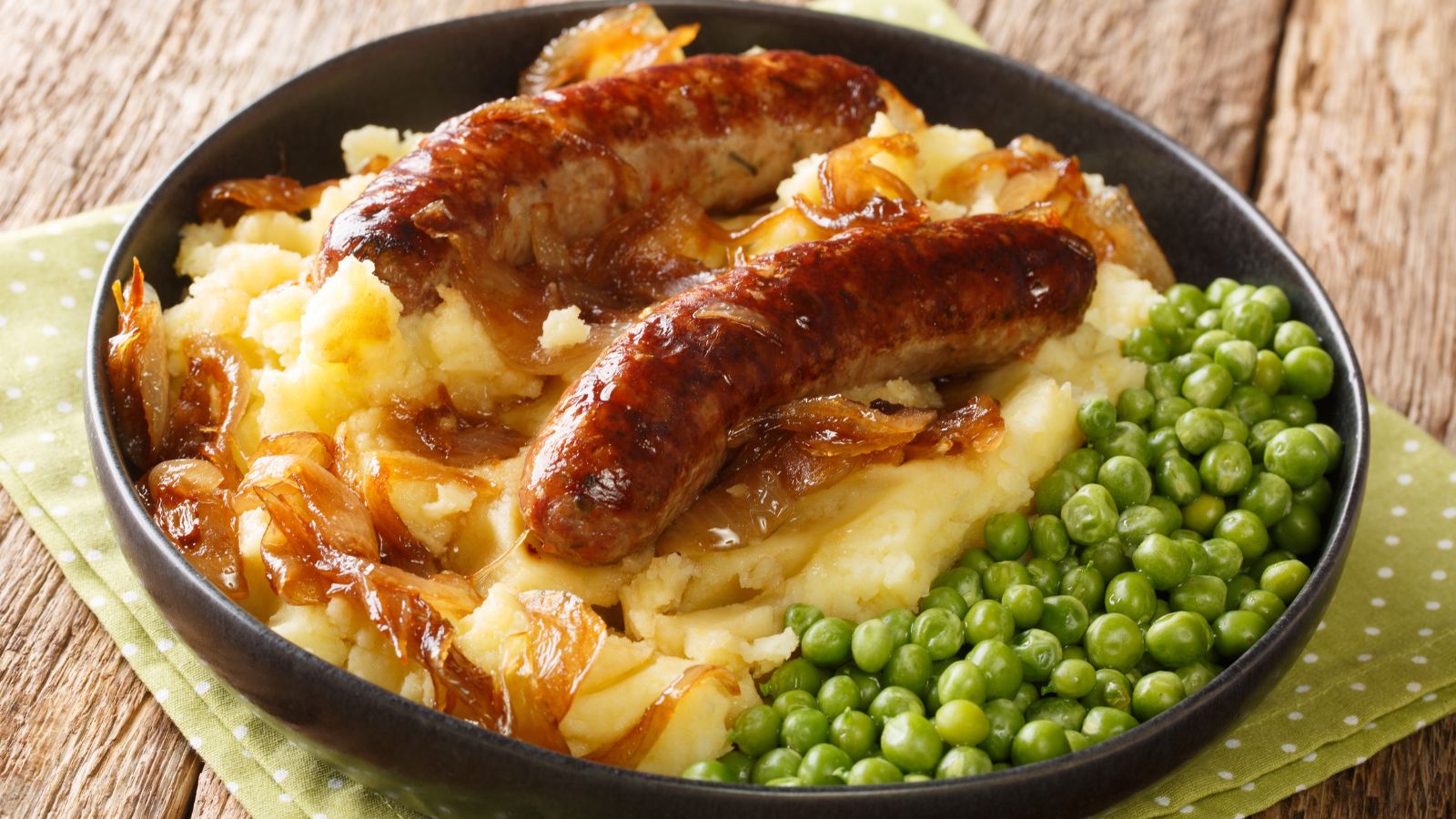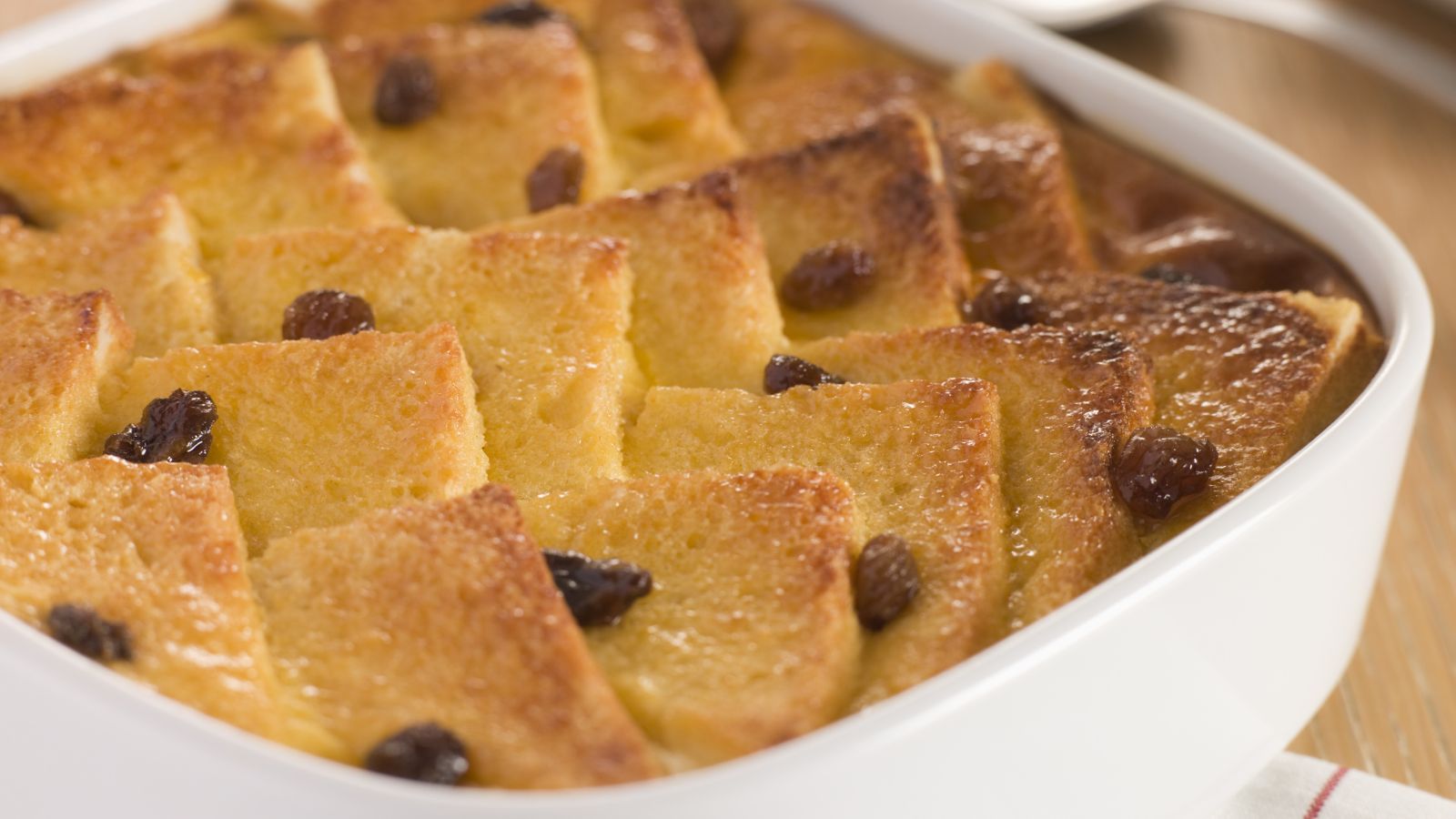When it comes to food, cultural differences can create a bit of a culinary clash. While some British dishes are loved and cherished in the UK, they often leave Americans wanting for more. Let’s take a look.
Black Pudding

Black pudding is one of those foods that Americans just can’t seem to get on board with, a type of blood sausage made with pig’s blood, oats, and suet, and it’s a breakfast staple in the UK but often considered downright off-putting by Americans. The idea of eating blood is enough to turn many stomachs.
Marmite

You either love it or hate it—there’s no in-between when it comes to Marmite. This yeast extract spread is packed with a salty, umami punch that Brits often spread on toast, while Americans, however, usually find its strong, almost bitter taste to be far too intense.
Jellied Eels

Jellied eels are a London delicacy that dates back centuries, but Americans generally see it as a dish best left in the past. Eels cooked and then set in their own gelatinous broth might sound odd enough, but the texture is what really throws people off.
Steak and Kidney Pie

A beloved part of British cuisine are pies, but when it comes to steak and kidney pie, Americans often stop at the word “kidney”. The idea of eating organs, particularly kidneys, tends to be a dealbreaker, even though the rich gravy and tender steak might sound appealing.
Spotted Dick

The name alone makes many Americans chuckle, but when they find out what it is, the confusion only grows; Spotted Dick is a steamed suet pudding with dried fruits, typically raisins or currants, which give it the “spotted” look. While the British might see it as a comforting dessert, Americans are often put off by the dense, slightly greasy texture.
Haggis

Haggis might be Scotland’s national dish, but it’s definitely not one that wins over many American fans. Made from sheep’s heart, liver, and lungs mixed with oatmeal and spices, then encased in the animal’s stomach, haggis is a hard sell.
Kippers

A common breakfast food in Britain are kippers, or smoked herring, but Americans often find the strong, fishy smell and taste hard to handle. While Brits appreciate the smoky, oily flavour of kippers with eggs or toast, the thought of starting the day with a fish that’s been heavily cured is not exactly appetising.
Mushy Peas

Mushy peas might be the perfect side for fish and chips in the UK, but Americans don’t quite see the appeal. Bright green and puréed until smooth, mushy peas look a bit like baby food, which puts off many would-be tasters—and the mild flavour and mushy texture aren’t enough to win them over either.
Treacle Tart

While the word “tart” might get people’s hopes up for a sweet, fruity dessert, treacle tart is something entirely different. Made with golden syrup (which is not a common ingredient in the US), breadcrumbs, and lemon, this sticky, overly sweet dessert doesn’t resonate with American taste buds.
Bangers and Mash

Bangers and mash, a quintessentially British dish of sausages and mashed potatoes, seems simple enough, but Americans are often turned off by the sausages themselves. British sausages, or “bangers”, can be quite different from the spicy or smoked varieties commonly found in the US.
Saveloy

A saveloy is a brightly coloured, seasoned sausage typically found in chip shops across the UK. The red casing and smooth, uniform texture can be off-putting for Americans, who are more accustomed to sausages with natural casings or more visible ingredients.
Tripe

Tripe, or the stomach lining of cows or sheep, is another traditional British food that doesn’t sit well with many Americans. Its chewy texture and bland flavour make it a challenge for even adventurous eaters, and while tripe has been enjoyed for centuries in Britain as part of hearty stews or pies, the mere idea of eating stomach lining is enough to make most Americans lose their appetite.
Bovril

A thick, salty meat extract, Bovril is often enjoyed as a hot drink or spread on toast in the UK, but for Americans, it’s a head-scratcher. The idea of drinking something that tastes like beef stock doesn’t exactly scream “comforting beverage” to most, who tend to prefer their broths in soup form, not as a savoury drink.
Pickled Onions

Pickled onions are a common snack or accompaniment in Britain, but the vinegary, sharp taste can be a bit too much for many Americans. While pickles themselves are popular in the US, the pungent flavour of pickled onions, especially when eaten on their own, is often overwhelming.
Laverbread

Made from boiled and puréed seaweed, laverbread is a traditional Welsh dish that’s highly nutritious but not particularly appealing to American palates. The soft, almost slimy texture and strong seaweed flavour make it a tough sell for those not used to eating such ingredients.
Bubble and Squeak

Bubble and squeak, made from leftover potatoes and cabbage, is a beloved British dish, but for Americans, it can seem a bit odd. The idea of frying up leftover vegetables into a mash isn’t something commonly seen in American cuisine.
Suet Puddings

A classic comfort food in the UK are suet puddings, but they leave many Americans scratching their heads. Made with suet (beef fat) and often filled with meat or dried fruits, these steamed puddings can have a dense, heavy texture that’s unfamiliar to Americans.
Pork Pies

Pork pies are a staple at British picnics and buffets, but Americans often find them less than appetising thanks to the cold, dense pastry surrounding a filling of minced pork and jelly makes for a texture that’s far from what Americans expect in a pie. The jelly layer, in particular, is what many find off-putting.
Mince Pies

While mince pies are a festive treat in Britain, they cause a bit of confusion in the US. Many Americans expect a savoury filling when they hear “mince”, but these little pies are actually filled with a spiced mixture of dried fruits and sometimes a bit of alcohol.
Clotted Cream

Clotted cream, a thick, rich cream spread on scones, is a beloved British tradition, but for Americans, it’s often a texture issue. The thick, almost buttery consistency can be surprising for those expecting regular whipped cream, and while it’s sweet and indulgent, many Americans find the richness to be overwhelming.
Bread and Butter Pudding

And finally, bread and butter pudding is a simple dessert made from stale bread, butter, sugar, and custard, but it’s not the most visually appealing dish. Americans often find the idea of using stale bread in a dessert a bit strange, and the slightly soggy texture doesn’t help matters.

